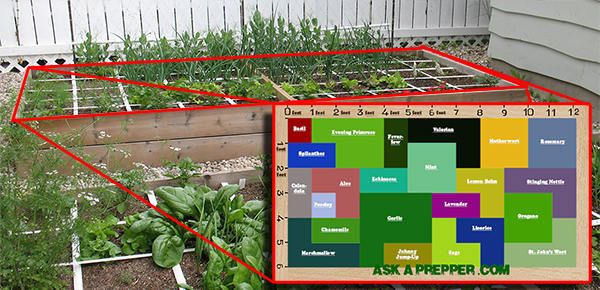
There are many classes available for animal tracking if you're interested in learning to track animals. The basic courses include a two-day course and a Bird track class. The classes are also available for those interested in learning how to read the upper vegetation. A class is also available to help you read the upper foliage. This article will help you get started on your quest. Once you feel comfortable with animal tracks, it is time to start your search for wild animals.
Basic animal tracking classes
In this introductory course, you'll learn about the basics of animal tracking, including how to read animal signs and identify their tracks. In addition to introducing the basics of tracking, you'll learn about the various animal families, as well as how to identify them. The course ends with a certificate of completion. This course is perfect for anyone looking to improve their wildlife observation skills and to learn more about the natural world.
Two-day human tracking course
You must be familiar with the basic principles of animal tracking in order to become a professional tracker. Whether you're new to the sport or have taken several week-long or weekend classes, you can enroll in a two-day course. You'll learn how to conduct tracking, as well as the essentials of animal tracking. The course consists of three parts: the Basics, Independent Study, and Six Arts of Tracking.

Bird track class
The natural history of birds in the area where you are tracking is crucial to determine which track type you have. If you are in open country, or in an arid area, it is very unlikely that you will find water-loving birds. It is important to learn about the niches and food habits of different species. Learning about these aspects will help you distinguish between different kinds of tracks and improve your tracking skills. Here's a brief guide to bird tracks.
Upper vegetation class
NASA satellite data has been used by scientists to study the effects of seasonal changes on wildlife. The Normalized Difference Vegetation Index is one way to assess the productivity of plants. Infrared light from satellites bounces off Earth and is most frequently reflected in bright green patches. Scientists use NDVI to observe greening patterns in land over time. Some scientists also combine NDVI data with satellite data about wind speed or direction.
Variations on pattern classification
Deep learning applied to behavioral analysis is well-suited for solving practical problems in tracking animal, such as detecting Chimpanzees. One example is the SNAP Tracker, which instantly tracks animals and provides human corrections if necessary. It is also widely used for animal tracking. Below are some variations on pattern classification in animal track classes.

FAQ
How many people hunt rifles in the US
There are approximately 2 million hunters who hunt deer, elk or moose with their rifles.
The majority of these hunters are male, between 18 and 55 years old, and from rural areas.
They hunt alone using either a bow and crossbow.
The most popular hunter is whitetail deer (68%), followed by mule and black deer (13%) and bears (10%)
While there aren't any national statistics on how many women hunt this sport, evidence indicates that the numbers of female hunters is increasing.
What are the benefits of hunting?
Hunting is an ancient tradition practiced by many cultures around the world. It was used for food, clothing, shelter, tools, medicine, and other purposes. People hunt today for sport and recreation, as well as for food and entertainment. The meat from hunted animals is often eaten immediately after killing, while the skin, fur, feathers, bones, antlers, horns, teeth, hooves, and other parts may be sold as trophies.
Hunting is not just a way to eat; it's a way to live.
People who hunt have strong family ties and friendships because they spend time together. They share stories and experiences at campfires, and over meals.
Hunting and nature are a joy for hunters, and this helps them appreciate the rest of our planet.
They learn responsibility and respect for others when they take care of game animals.
Hunters become better citizens because they practice conservation. They protect species and habitats. They understand how much land and water we need to survive.
Hunters are part of a community. Their families rely on them. They support one another. They support local businesses.
Hunters are also able to give back to the community. Many hunters donate money to charities that assist children, the elderly, and veterans, among other causes.
Hunters may also offer their time and help to those in need. For example, they might work with the Humane Society or the Red Cross.
How much does it cost to hunt?
Hunting trips can be expensive depending on where you live, what type of wildlife is being targeted, and how big the animal that you are hunting.
In general, a two-person hunting party will cost between $500-$1,000 per head. This includes accommodation, food, gas, equipment, licenses, etc.
Some areas charge higher prices than others. Hunting during peak seasons such as the fall turkey and spring turkey seasons will result in higher prices.
Is it possible to hunt without a licence?
Yes, it is possible to hunt without a licence. This is a violation of the law.
You could face fines and even jail time.
Some states permit residents to hunt without a license. For more information, contact your state department or natural resources.
What should I know about hunting?
To hunt successfully, it is important to know how the animal moves, how its habits are and how to avoid getting hurt.
It is important to know the laws regarding hunting in your state. Some states allow certain types of hunting while others prohibit it completely.
Other factors include terrain and weather conditions.
When you decide to pursue this hobby, you should consider whether you want to hunt alone or with friends and family.
Hunting is something that most people prefer to do with their friends. Because it helps you concentrate on your goal. Your shot might be missed if you are alone.
Hunting requires planning. Planning is essential to ensure you hunt in the right place.
Prepare your weapons as well. Before you leave, clean and inspect your guns to make sure they are in good condition.
When hunting, you should always wear appropriate clothing. Dress appropriately for the weather conditions and terrain.
It is important to ensure that you have enough food and water. You should also carry extra ammunition and supplies just in case something happens.
You should never leave anything unattended. It could be lost or damaged.
You should pick a safe area that is free from predators before you go hunting.
Follow the guidelines set forth by the government. These regulations protect wildlife as well as humans.
What gun is best for hunting?
A.22 caliber rifle makes the most effective hunting weapon. It is light and easy to transport. It is also able to shoot accurately from long distances.
The best time to use this type of firearm is when you are not expecting an attack from a predator.
You don't want ammunition to be wasted by shooting at a tree. It would do very little damage. You must be able to clearly see your prey.
A rifle with a.30 calibre can be used for hunting larger game such deer and elk. It's heavier than the.22 caliber rifle.
You will need to practice more to achieve the same level of accuracy with a 30-caliber rifle.
Why is it that only 1% of hunters kill deer annually, according to the U.S. Department of Agriculture.
USDA estimates that about 6 million Americans hunt deer. Only 2.2 million shoot one.
This means that only about 0.6 percent of all hunters kill a deer each year.
Statistics
- Indiana, for example, saw a 28% jump in turkey license sales during the first week of the season. (stacker.com)
- Over the past 50 years, the number of hunting licenses in California has been on a rapid decline, falling 70% from more than 760,000 in the 1970s to under 268,000 in 2020—even as the state's population has skyrocketed, according to The Mercury News. (stacker.com)
- - Percent of residents with paid hunting licenses: 0.7%- (stacker.com)
- According to the Wildlife Restoration Act, passed in 1937, most of the state conservation efforts are funded through hunting and fishing license sales and firearms sales. (stacker.com)
External Links
How To
How to hunt wild turkeys
Wild Turkeys live in North America. They are most common in Texas, Oklahoma, New Mexico, Arizona, Colorado, Utah, California, Nevada, Idaho, Wyoming, South Dakota, Montana, and Washington. Wild Turkeys consume grasses, seeds and insects. In certain regions, wild turkeys eat berries or acorns as well as fruit from trees. Their diet helps them to stay strong and healthy. Wild Turkey feathers are used to make clothes and hats. It is possible to eat the meat from their breasts.
You can hunt wild turkeys safely if these tips are followed. Wear long pants and close-toe shoes. Avoid perfume and cologne as they attract predators. If you see a predator, do not run away. Instead, keep walking slowly towards your vehicle. Keep calm and collected as you approach birds. It might take several attempts before the bird is close enough to you that you are able get a good shot. You should use 00 buckshot to shoot wild turkeys. It is best to only take one shot.
If your gun jams try again later. To avoid being hit with flying pellets, duck behind your car or tree. If you're lucky, a hunter might come along to help you clean up.